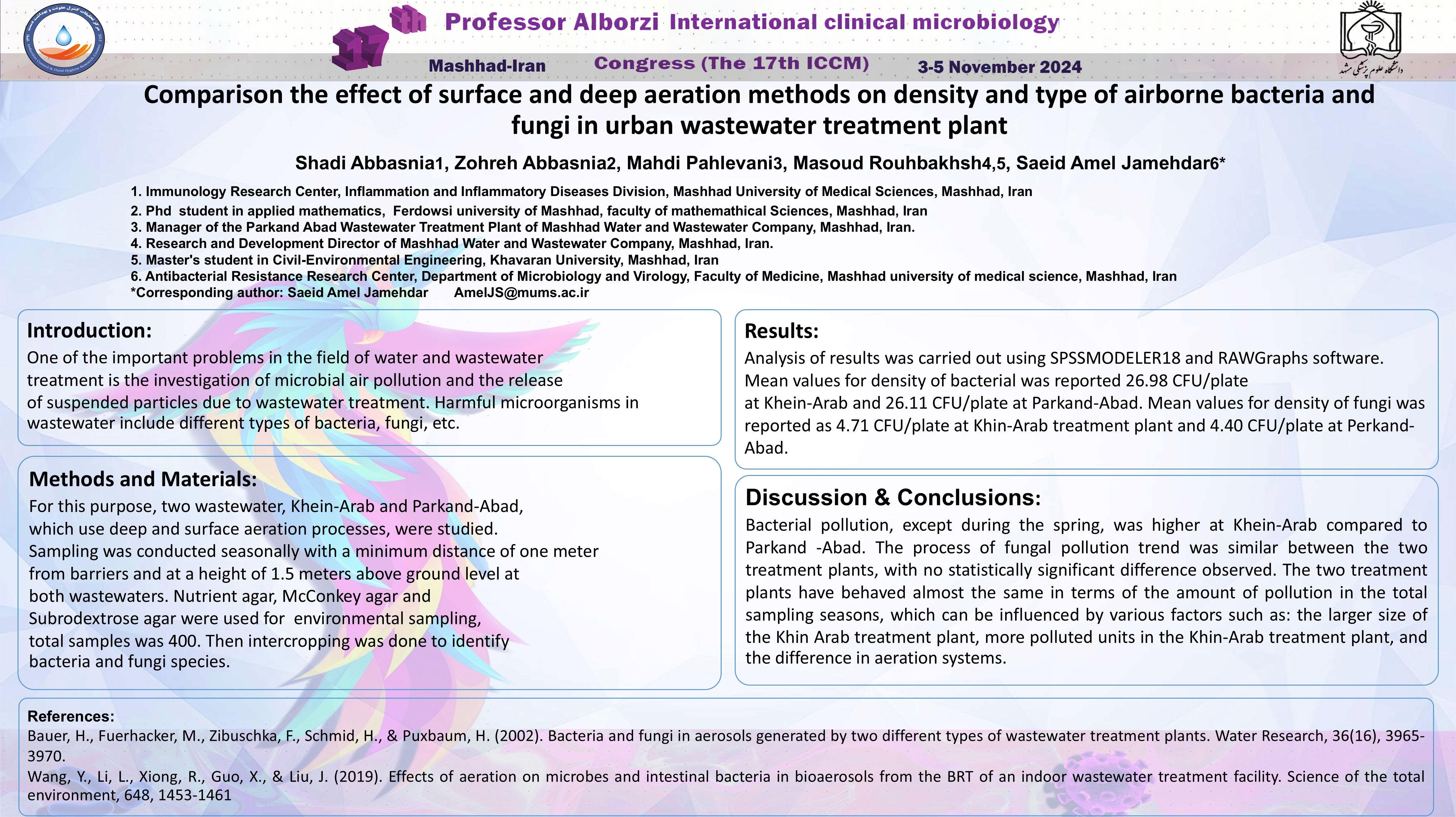مقایسه تأثیر روش هوادهی سطحی و عمقی در تصفیهخانه فاضلاب شهری بر تراکم و نوع باکتریها و قارچهای هوابرد
کد: G-1111
نویسندگان: Shadi Abbasnia ℗, Zohreh Abbasnia, Mahdi Pahlevani, Masoud Rouhbakhsh, Saeid Amel Jamehdar ©
زمان بندی: زمان بندی نشده!
دانلود: دانلود پوستر
خلاصه مقاله:
خلاصه مقاله
One of the important problems in the field of water and wastewater treatment is the investigation of microbial air pollution and the release of suspended particles due to wastewater treatment. Harmful microorganisms in wastewater include different types of bacteria, fungi, etc. For this purpose, two wastewater, Khein-Arab and Parkand-Abad, which use deep and surface aeration processes, were studied. Sampling was conducted seasonally with a minimum distance of one meter from barriers and at a height of 1.5 meters above ground level at both wastewaters. Nutrient agar, McConkey agar and Subrodextrose agar were used for environmental sampling, total samples was 400. Then intercropping was done to identify bacteria and fungi species. Analysis of results was carried out using SPSSMODELER18 and RAWGraphs software. Mean values for density of bacterial was reported 26.98 CFU/plate at Khein-Arab and 26.11 CFU/plate at Parkand-Abad. Mean values for density of fungi was reported as 4.71 CFU/plate at Khin-Arab treatment plant and 4.40 CFU/plate at Perkand-Abad. Bacterial pollution, except during the spring, was higher at Khein-Arab compared to Parkand -Abad. The process of fungal pullotion trend was similar between the two treatment plants, with no statistically significant difference observed. The two treatment plants have behaved almost the same in terms of the amount of pollution in the total sampling seasons, which can be influenced by various factors such as: the larger size of the Khin Arab treatment plant, more polluted units in the Khin-Arab treatment plant, and the difference in aeration systems.
کلمات کلیدی
Wastewater treatment plant, Surface aeration, Deep aeration, Bioaerosol
